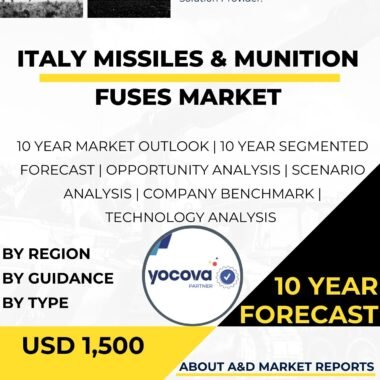Description
Precision Guided Munitions (PGMs) have revolutionized modern warfare and provided the United States with a significant advantage on the battlefield. These munitions, also known as smart weapons or guided munitions, employ advanced guidance systems to precisely target and engage specific enemy assets with a high degree of accuracy. By minimizing collateral damage and increasing mission success rates, PGMs enhance the effectiveness of military operations while reducing risks to civilians and friendly forces.
PGMs come in various forms, including missiles, bombs, artillery shells, and rockets, each tailored for specific platforms and missions. Their guidance systems can be based on various technologies, such as Global Positioning System (GPS), laser guidance, inertial navigation, or a combination of these methods.
One of the most well-known types of PGMs is the precision-guided bomb, commonly used by the U.S. Air Force and Navy. Laser-guided bombs (LGBs) use laser designators to illuminate a target, and the bomb homes in on the laser spot for precise targeting. Joint Direct Attack Munitions (JDAMs) are another type of PGM that utilizes GPS guidance to provide all-weather, day and night accuracy.
The Tomahawk Land Attack Missile (TLAM) is a long-range cruise missile employed by the U.S. Navy, known for its precision strike capabilities. It uses a combination of inertial and GPS guidance to navigate over long distances and engage targets with pinpoint accuracy.
PGMs have drastically changed the way military operations are conducted, allowing forces to engage targets with greater precision and from stand-off distances. This capability has been instrumental in reducing the risk to pilots and crews while increasing the effectiveness of air strikes.
The use of PGMs has become particularly crucial in urban warfare scenarios, where traditional weapons might cause significant collateral damage and civilian casualties. By accurately targeting enemy assets while minimizing unintended harm, PGMs contribute to the protection of civilian lives and infrastructure.
Furthermore, PGMs have proved indispensable in counterterrorism operations, enabling the elimination of high-value targets with minimal risk to friendly forces. Their precision allows for surgical strikes that disrupt enemy networks and prevent future attacks.
PGMs also enhance the effectiveness of naval operations, enabling ships and submarines to engage distant targets with accuracy. The ability to launch missiles from a safe distance allows naval forces to project power and conduct precision strikes without exposing their ships to unnecessary risks.
The effectiveness of PGMs has been demonstrated in various conflicts, including the Gulf War, Afghanistan, Iraq, and more recently in the fight against terrorist organizations like ISIS. Their use has resulted in the destruction of critical enemy infrastructure, command centers, and weapon systems.
As PGM technology continues to evolve, efforts are being made to enhance their capabilities further. This includes increasing range, payload capacity, and accuracy, as well as developing more advanced guidance and target recognition systems.
Furthermore, the integration of PGMs with unmanned aerial vehicles (UAVs) and other unmanned systems has expanded their versatility and effectiveness. Armed UAVs equipped with PGMs can conduct precise strikes without risking the lives of pilots.
The U.S. defense industry plays a significant role in the development and production of PGMs. Companies such as Lockheed Martin, Raytheon, Boeing, and Northrop Grumman are major contributors to the design and manufacturing of these advanced munitions.
While PGMs offer numerous advantages, their use is not without challenges and ethical considerations. There is a potential for overreliance on PGMs, leading to a reduction in traditional warfare skills and tactics. Additionally, adversaries have sought to develop countermeasures to defeat or disrupt PGMs’ guidance systems.
Furthermore, the potential for misuse or unintended consequences of PGM strikes raises ethical questions about the conduct of warfare and the responsibility to protect civilians during armed conflicts.
The proliferation of PGMs also poses risks in terms of arms control and nonproliferation efforts. The spread of advanced PGM technology to non-state actors or hostile nations could escalate conflicts and increase instability in regions of strategic importance.
To address these challenges, the United States and its allies prioritize robust training, adherence to rules of engagement, and continuous review and refinement of targeting procedures to minimize the risk of unintended harm during PGM strikes.
Additionally, efforts to develop countermeasures against PGMs and strengthen defenses against precision strikes continue to be important areas of research and development.
In conclusion, Precision Guided Munitions have revolutionized modern warfare, providing the United States with a significant advantage in precision strike capabilities. These advanced munitions utilize advanced guidance systems to accurately engage specific enemy assets, minimizing collateral damage and enhancing mission success rates. PGMs have been instrumental in reducing risks to friendly forces while increasing the effectiveness of military operations. Their use has been demonstrated in various conflicts, showcasing their versatility and capability to disrupt and destroy enemy targets. As technology continues to evolve, efforts to enhance PGM capabilities, address challenges, and maintain adherence to ethical principles will be crucial in ensuring their responsible and effective use in the U.S. military’s operations.




